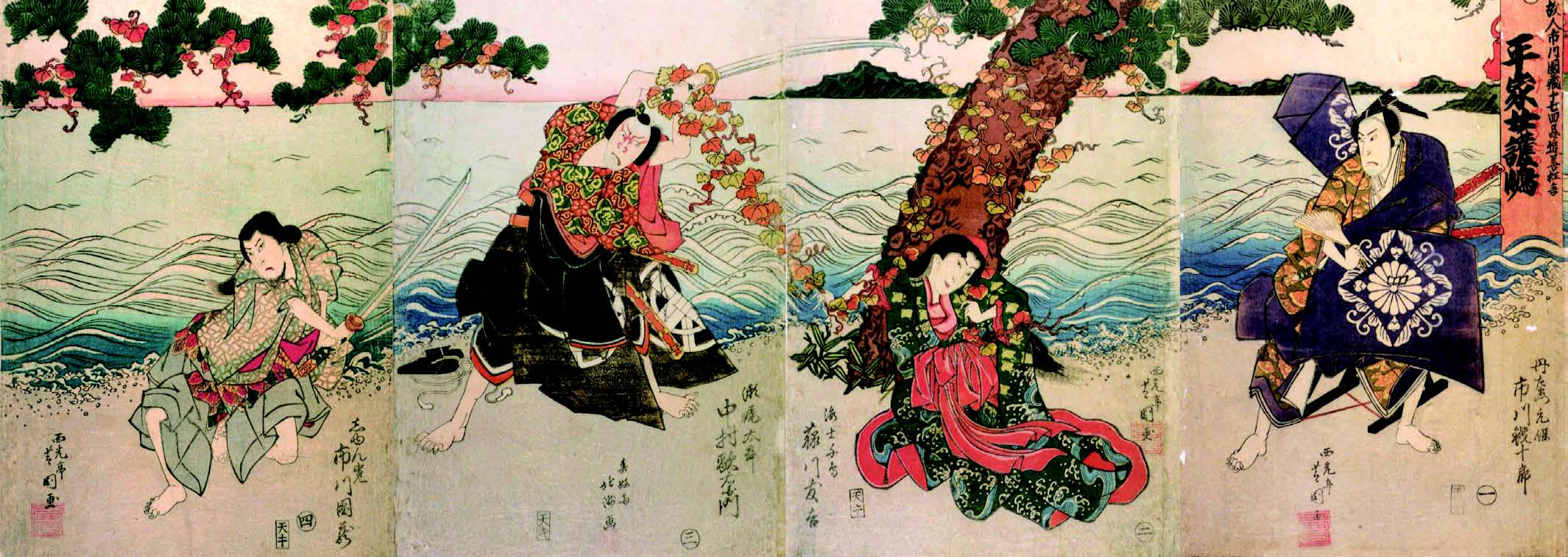Brett Iimura ICCE, mother of two, is the director of Childbirth Education Center (CEC), serving parents-to-be throughout Japan since 1997. Iona Macnab IBCLC is a lactation consultant in private practice in Tokyo and mother of three. They have over thirty years of combined experience in Japan, and much experience raising bilingual, bicultural children.
by Brett Iimura and Iona Macnab
Are you around for the summer and looking for a way to delve deeper into Japanese culture? The National Theater of Japan is holding a special parent-child introduction to kabuki from July 18–24. Although kabuki performances often last all day long, this two-hour presentation specifically directed at children is an easy way for adults who are also unfamiliar with the genre to whet their appetites. The performance includes two short kabuki pieces as well as an interactive explanation of the techniques used during performances. Kabuki is the highly stylized, traditional Japanese theater art form which has its origins in the Edo period (1603–1868). The three characters that make up the name mean sing (歌), dance (舞), and skill (伎). Originally, it was a wildly entertaining new art form popular in the red light districts of Tokyo, then called Edo. Although women performed in the very early days of kabuki, the erotic nature of the performances and the over-exuberant attention from male admirers led officials to ban women performers in 1629 and give their roles to young men. This did not solve the problem of prostitution already associated with kabuki, so the shogunate created harsher regulations governing the performances. The emphasis on dance was lessened, at the same time becoming more stylized, and the dramatic elements were highlighted. There are three basic types of kabuki plays: historical, ‘domestic,’ and dance pieces. The historical dramas are mostly set in the 1100s–1300s, although originally these earlier settings often only served as allegories for censored current events of the Edo period. The so-called domestic plays focus more on family issues and doomed love affairs. Yanone (Arrowhead), the first piece on this summer’s program, is a historical piece done in the flashy, exaggerated aragoto style and was first performed in 1729. Based on the story of two samurai brothers, who for 18 years seek revenge for the murder of their father, it also includes humorous scenes, such as one that sees a daikon radish used as a riding crop. The title of the play comes from the first scene in which one of the brothers is sharpening a giant arrowhead to use on the vengeful day. The second piece, Fujimusume (Wisteria Maiden), dates back to 1826 and is a dance piece featuring a painting of a wisteria sprite who becomes so infatuated with a young male passerby that she comes to life. Alas, her love goes unrequited and she returns to the painting.
Several stage innovations have become associated with kabuki. The revolving stage, in which a center circle of the main stage can be rotated separately for the purpose of changing scenes quickly, is often employed. The hanamichi is a long, narrow walkway that extends out from the stage into the audience upon which dramatic entrances and exits are made. The kuroko, stage hands dressed from head to foot in black, run on and off stage moving props or performing their most magical act of changing an actor’s costume in full view of the audience in a matter of seconds. These and other tricks of the trade are demonstrated and explained during the interactive session in the second half of the presentation. If your tyke raises his or her hand and is one of the lucky ones to be chosen, he or she may even be invited up on stage to experience first hand the secrets of kabuki and perform a short skit with the actors. No worries about appeasing hungry children that aren’t chosen since food and drinks are welcomed in the theater, a rarity in most venues but a necessity for the usual day-long performances. Lunch boxes and snacks are sold at kiosks in the lobby. Something else that may surprise you are the shouts from audience members that punctuate the performances—appreciation is shown by calling out the names of famous kabuki actors whenever an exemplary action is performed. Overall, this special summer program is sure to enhance anyone’s experience of the ‘real’ Japan.
Parenting Tip
Tickets for this special summer program are sold in sets ranging from a minimum of 1 adult and 1 child and a maximum of 1–2 adults and 4–5 children. Reservations must be made no later than ten days prior to your preferred date and will be mailed to you. Adult tickets are ¥2,000 for the first and second floor and ¥1,300 yen for the third floor. Children’s tickets are ¥1,000 yen. Those able to read Japanese can utilize the website: www.ntj.jac.go.jp/oyako/index to make reservations. Otherwise, telephone reservations can be made by dialing 0570-07-9900 and asking for an English speaking operator. Earphones with English translation will be available at the performance.









